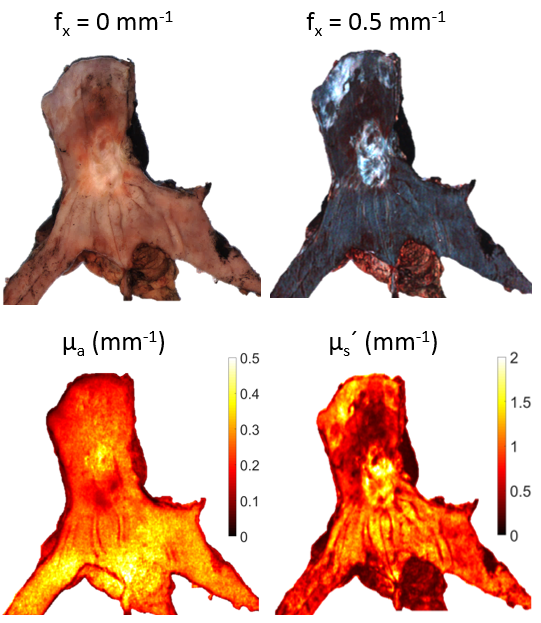Wide‐field optical property mapping and structured light imaging of the esophagus with spatial frequency domain imaging
Sweer JA, Chen MT, Salimian K, Battafarano RJ, Durr NJ
Journal of Biophotonics, 2019
Publisher’s Link
Abstract
As the incidence of esophageal adenocarcinoma continues to rise, there is a need for improved imaging technologies with contrast to abnormal esophageal tissues. To inform the design of optical technologies that meet this need, we characterize the spatial distribution of the scattering and absorption properties from 471 to 851 nm of 8 resected human esophagi tissues using Spatial Frequency Domain Imaging. Histopathology was used to categorize tissue types, including normal, inflammation, fibrotic, ulceration, Barrett’s Esophagus, and squamous cell carcinoma. Average absorption and reduced scattering coefficients of normal tissues were 0.211 ± 0.051 mm‐1 and 1.20 ± 0.18 mm‐1 respectively at 471 nm, and both values decreased monotonically with increasing wavelength. Fibrotic tissue exhibited at least 68% larger scattering signal across all wavelengths, while squamous cell carcinoma exhibited a 36% decrease in scattering at 471 nm. We additionally image the esophagus with high spatial frequencies up to 0.5 mm‐1 and show strong reflectance contrast to tissue treated with radiation. Lastly, we observe that esophageal absorption and scattering values change by an average of 9.4% and 2.7% respectively over a 30 minute duration post‐resection. These results may guide system design for the diagnosis, prevention, and monitoring of esophageal pathologies.
